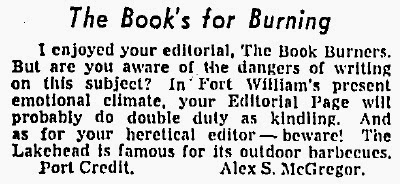 |
| The Moving Picture World 2 October 1920 |
A follow-up to last week's post on Frank L. Packard's The White Moll.
TheWhite Moll was the fifth Frank L. Packard book to be adapted by Hollywood. It followed Tinseltown's take on his 1914 novel The Miracle Man by a matter of months. The Miracle Man is considered one of the great lost silent films. I first wrote about it thirteen years ago, sharing the two minutes and twenty seconds of known footage. Since then a further thirty-nine seconds has been found.
Huzzah!
Here's what we now have:
Of the eight Packard novels I've read, The Miracle Man is the best by far. It concerns a faith healer in Maine whose activities attract the attention of a criminal gang. Wanting in on what the grift, they leave the Big Apple for the Pine Tree State, only to find that there is no grift. The White Moll is something altogether different. It was published in 1920, when Packard was all in on thrillers; The Adventures of Jimmie Dale (1917) and The Further Adventures of Jimmie Dale (1919) had been his two biggest sellers.
As a novel, The White Moll has nothing whatsoever to do with religion, but the film was steeped in a baptismal font. I write with confidence, though I haven't seen Hollywood's adaptation. Like The Miracle Man, it's a lost silent. If anything, The White Moll is even more lost in that not so much as a frame has been found. Everything I know of the movie comes through reviews and descriptions found in one-hundred-and-four-year-old newspapers and magazines.
The screenplay is credited to E. Lloyd Sheldon (1886-1957), who is best remembered for Tess of the Storm County (1922). It starred Toronto girl Mary Pickford; The White Moll starred Pearl White. She'd made a name for herself as "Queen of the Serials," the 20-chapter Perils of Pauline (1914) being the most popular. The White Moll was intended as White's first step toward becoming the Queen of the Features.
 |
| Exhibitors Herald 4 August 1920 |
And thats just the start!
Critic Mae Tinée – real name: Frances Peck Grover – isn't completely down on the film. She praises the camera work and sets as "good," and describes Richard Travers, who played the Adventurer, as the only punk actor. It's the religious elements that offend:
Some things transpire in a church at the start of the picture that quite seriously offend one's good taste. The production will go better when the scenes utilizing the image of Christ crucified are omitted.
Christ crucified!
Reading through the reviews, I've managed to cobble together a plot that owes little to Packard's novel. William M Drew appears to have walked a wider trail, so I quote from his recent biography of Pearl White, The Woman Who Dared (Lexington: UP of Kentucky, 2023):
The White Moll cast Pearl as Rhoda, a thief from the underworld slums. Her life is transformed when she has a vision of Christ during a church robbery in which her father is killed. Becoming known as the "White Moll," she dedicates her life to reforming criminals. One of them, the "Sparrow," is a burglar who catches her fancy. Her activities as a settlement worker arouse the antagonism of the the "Dangler" (played by John Thornton Baston), the leader of a criminal band, who clashes with her throughout the film. Her idealism wins out as she succeeds in bringing the "Dangler" to justice and finds love with the "Pug" (Richard C Travers), another reformed crook. In the course of these adventures, Pearl disguises herself as Gypsy Nan, a toothless hag who not "one fan in a million could guess" was the beautiful actress.
The Rhoda of the novel is a young woman who has been raised in comfort by a loving father, a well-positioned, well-respected mining engineer. She dedicates herself to caring for the poor after witnessing their squalid living conditions. The "Sparrow" appears late in the novel in her time of need. He is not someone who has captured her fancy. In the novel the "Dangler" is gang leader Pierre Dangler. He has no idea Rhoda is working against him. The "Pug" is not a reformed crook, rather an upstanding young man who has infiltrated Dangler's gang so as to bring them to justice.
The 7 August 1920 Moving Picture World reports:
The story is considered by Frank L. Packard, its author, to be the most powerful novel he has ever written, truly reflecting underworld existence.What, one wonders, did the author make of such a radical departure from his story? As I've not had a chance to comb through the Frank L. Packard fonds at Library and Archives Canada, all I have to go on are these two paragraphs from a letter he wrote producer William Fox, as quoted in the 21 August 1920 edition of Moving Picture World:
 |
I wonder whether Packard, a devout Anglican and congregant of Montreal's St James the Apostle, would have objected to the depiction of the crucified Christ (uncredited), or whether he would've embraced the religious elements, particularly after the success of The Miracle Man.



















































